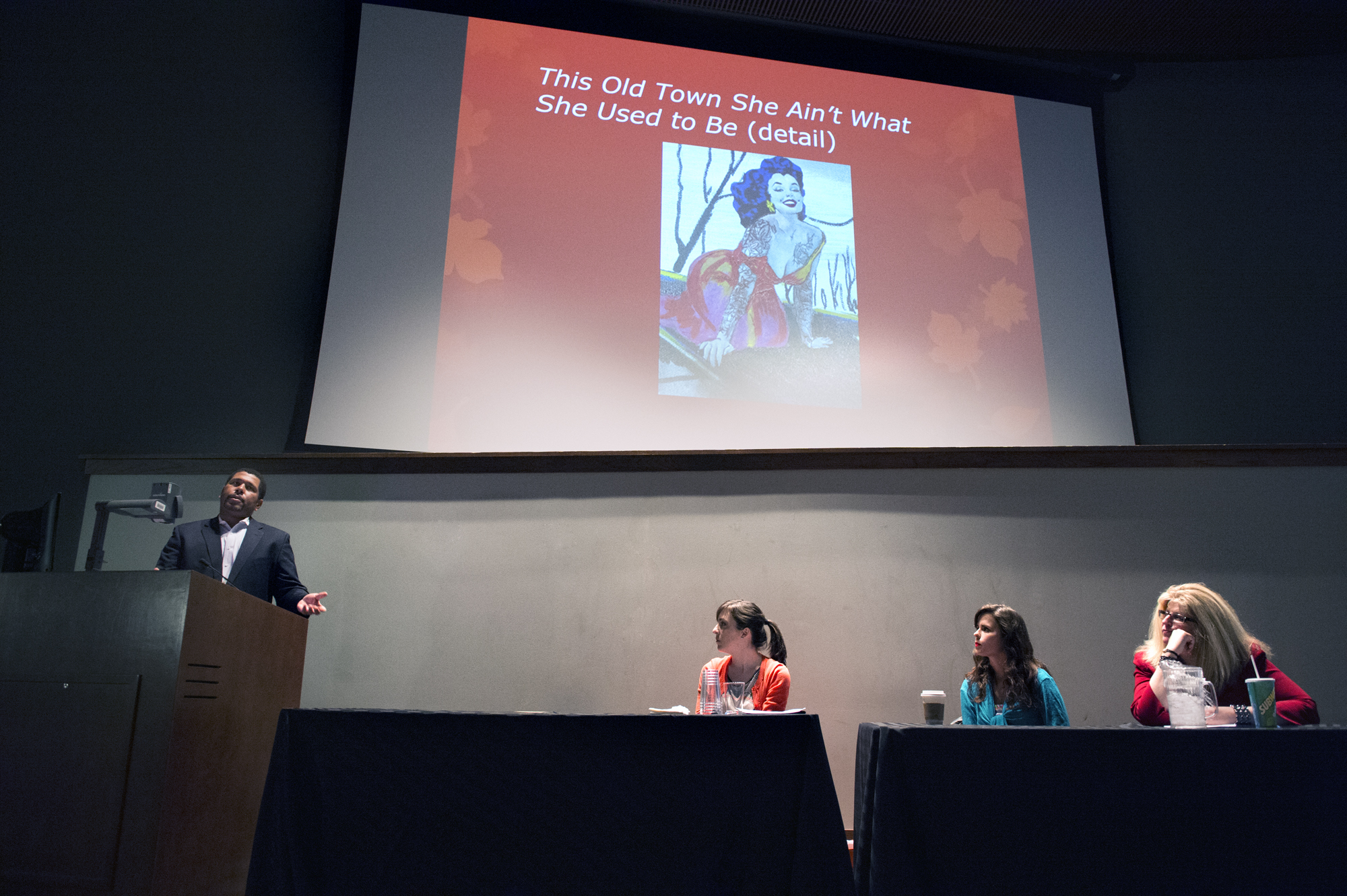Contact: Leah Barbour

Whether they're creating books or paintings, artists work to create an authentic vision.
At Mississippi State's recent Whiteness Symposium, sponsored by the African-American Studies program, a panel explored how some artists portray race. The group included acrylics painter Samantha Baldwin, scholars Anne Babson and Carly Houston, and university assistant professors Kristina Hood and Donald M. Shaffer Jr., who examined artistic visions of whiteness and blackness spanning the period between 1900 and the present.
Hood, who teaches both African-American Studies and psychology courses, began by thanking her colleagues for their willingness to participate in a sensitive discussion about a challenging subject.
Baldwin, a Pontotoc County native of Toccopola, cited one of her artistic visions of whiteness as portrayed in her parody series featuring Colonel Reb, the former University of Mississippi mascot. Colonel Reb is reimagined in caricatures, such as "Mona Lisa" in "Mona Reb" and the mouth-wide-open figure of Edvard Munch's "The Scream."
While the work may make some people feel uncomfortable, Baldwin said she doesn't shrink from showing things as she feels they really are.
"My artwork, I feel like it's present, but it's shadowing the past," Baldwin explained. "What I struggle with so much with my artwork here in the South is, it's not necessarily something people want to talk about.
"I can't tell you how many times people have asked me, 'Samantha, why don't you paint landscapes? Why don't you paint a pretty barn or a pretty cotton field?' But to me, that's not interesting."
Baldwin continued: "What's interesting is the story there, and what's interesting is the truth. And, for me, that's what really compels me to do my artwork."
Babson, in a presentation titled "Smashing the Magnolia: Samantha Baldwin's Gothic Deconstruction of Southern Belle and Southern Beau Whiteness," emphasized how she feels many people tend to embrace a concept of race that has no basis in reality. Instead, it only is a concept passed from person to person, and nobody questions its validity, she said.
Art can show people the truth and Baldwin's work promotes that truth, Babson said, adding, "Baldwin has a way of discovering some truths heretofore unspoken in the portraits where she paints real Caucasians in white spaces but without an empire."
Houston, in "Language and Race in Charles Chesnutt's 'The House Behind the Cedars'" explored the African American author's vision of race as portrayed through dialogue in the 1900 book.
"Whiteness, partly through standardized English, is an identity that the Rena's character has been bred in her whole life," Houston said of the book. "John and Molly's characters subvert the idea that race is visually determined and will always reveal itself. Rena's character subverts the idea that whiteness can always be heard."
Shaffer, who teaches both African-American Studies and English courses, observed that the characters in Chesnutt's book may have challenged the ideology of race prevalent during the early 20th century, but the ending of the book shows that the challenge failed.
Learn more about African-American Studies at MSU by visiting www.aas.msstate.edu.